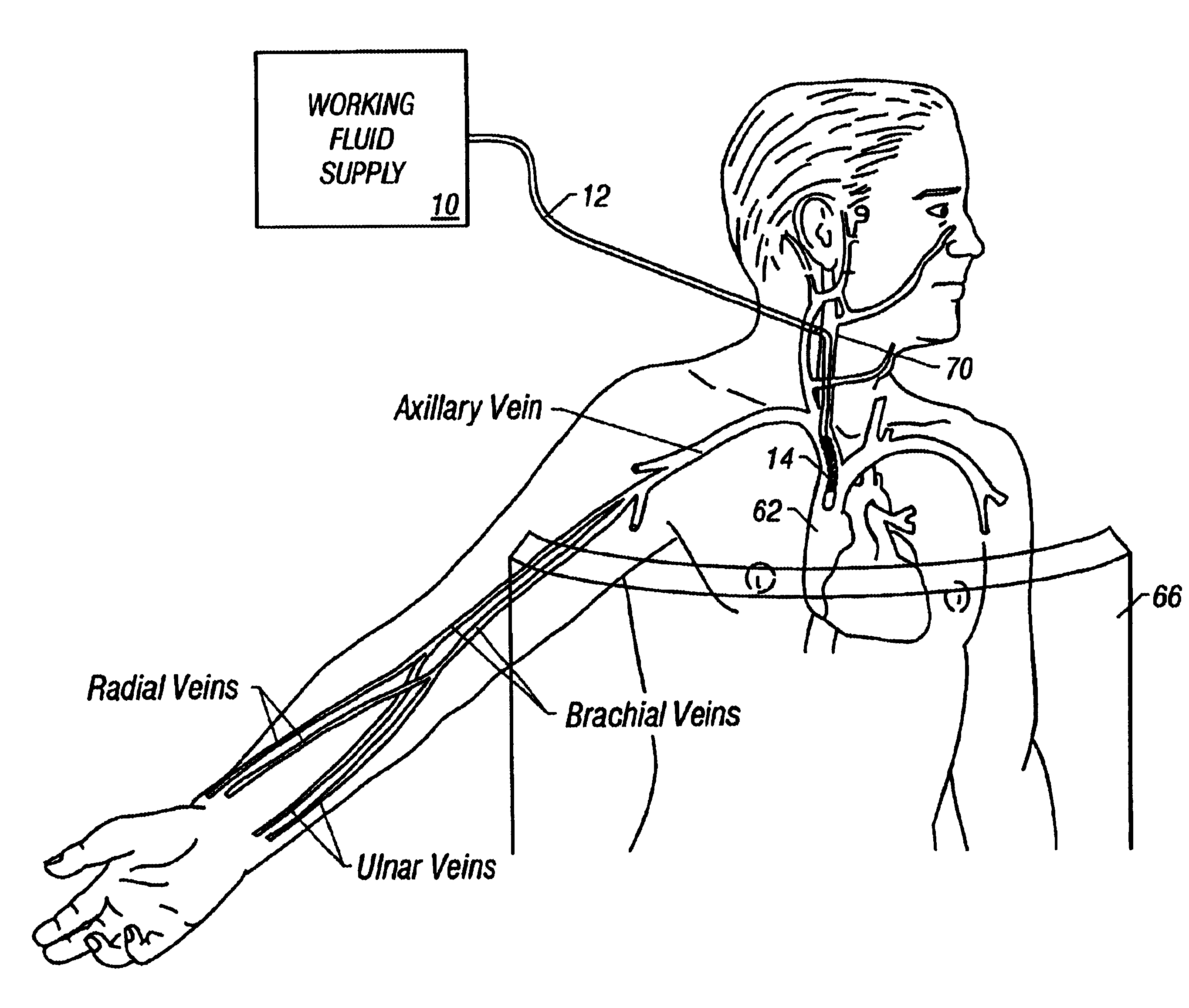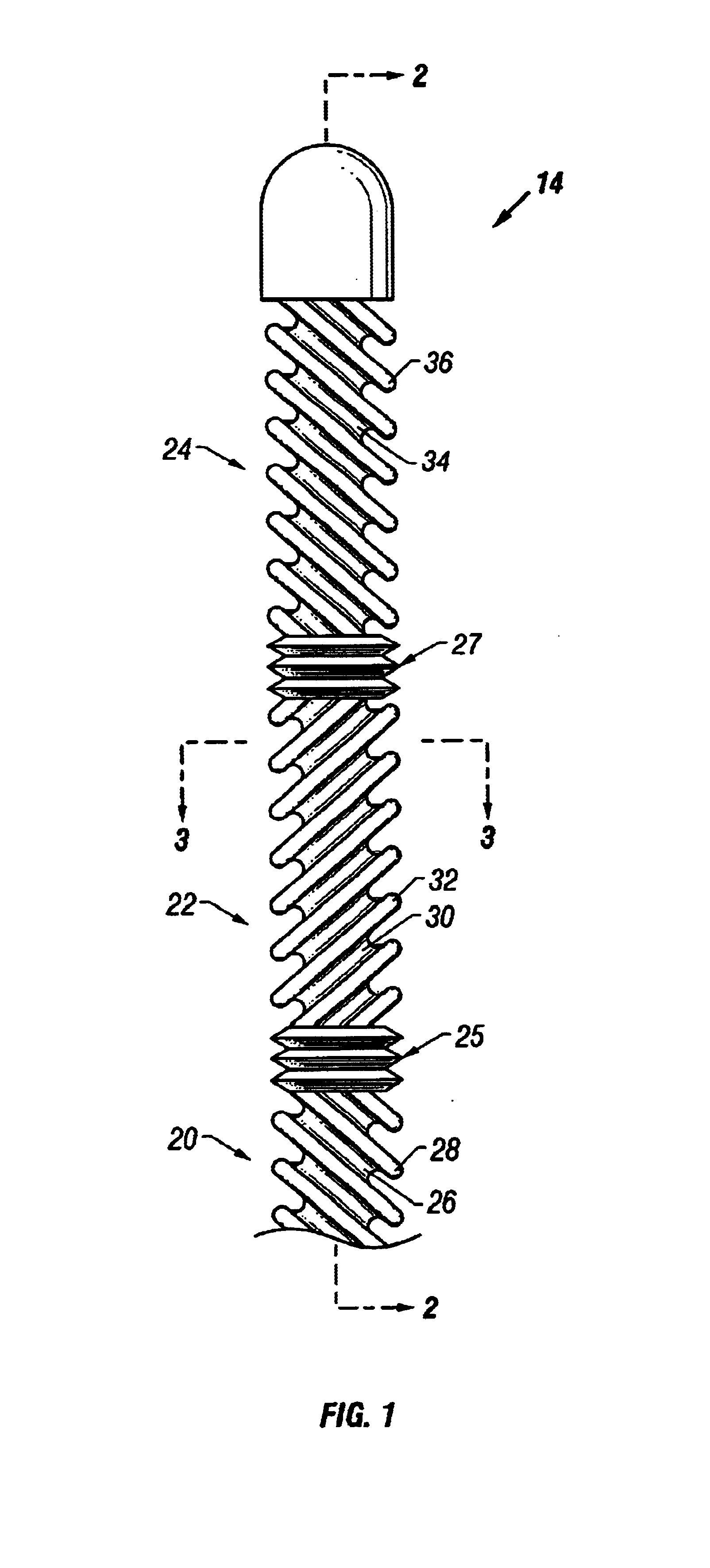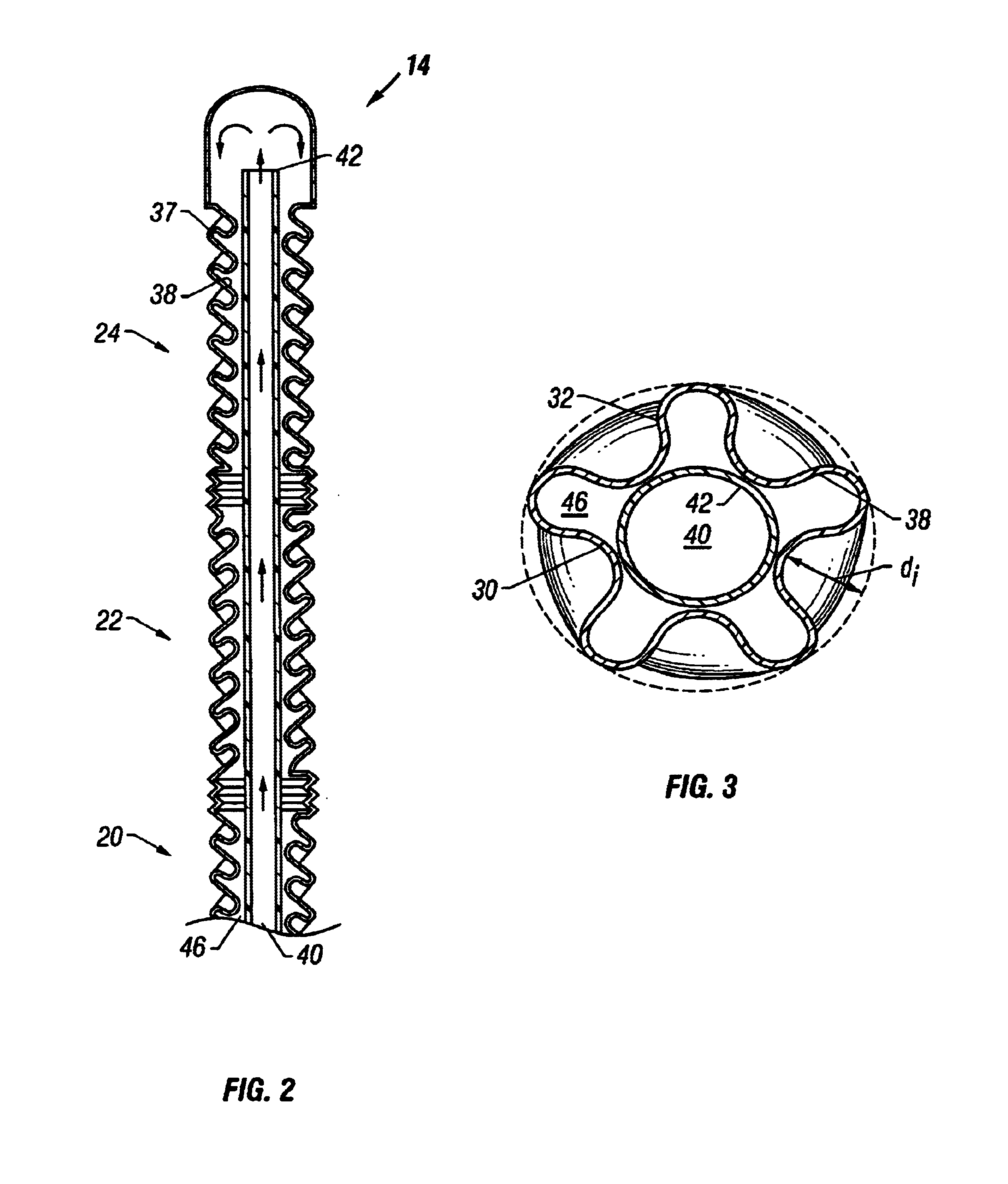Patient temperature regulation method and apparatus
a temperature regulation and patient technology, applied in the field of patient temperature regulation methods and apparatuses, can solve the problems of cumbersome present methods of administering total body hypothermia, high cumbersome use of dato devices, and device failure to disclose or teach the use of any ability to enhance heat transfer, so as to reduce the temperature of the body, lower the thermoregulatory setpoint of the body, and prevent the intervention of the body's thermoregulatory response
- Summary
- Abstract
- Description
- Claims
- Application Information
AI Technical Summary
Benefits of technology
Problems solved by technology
Method used
Image
Examples
Embodiment Construction
OVERVIEW
A one or two-step process and a one or two-piece device may be employed to intravascularly lower the temperature of a body in order to induce therapeutic hypothermia. A cooling element may be placed in a high-flow being such as the vena cavae to absorb heat from the blood flowing into the heart. This transfer of heat causes a cooling of the blood flowing through the heart and thus throughout the vasculature. Such a method and device may therapeutically be used to induce an artificial state of hypothermia.
A heat transfer element that systemically cools blood should be capable of providing the necessary heat transfer rate to produce the desired cooling effect throughout the vasculature. This may be up to or greater than 300 watts, and is at least partially dependent on the mass of the patient and the rate of blood flow. Surface features may be employed on the heat transfer element to enhance the heat transfer rate. The surface features and other components of the heat transfer...
PUM
| Property | Measurement | Unit |
|---|---|---|
| temperature | aaaaa | aaaaa |
| temperature | aaaaa | aaaaa |
| temperature | aaaaa | aaaaa |
Abstract
Description
Claims
Application Information
 Login to View More
Login to View More - R&D
- Intellectual Property
- Life Sciences
- Materials
- Tech Scout
- Unparalleled Data Quality
- Higher Quality Content
- 60% Fewer Hallucinations
Browse by: Latest US Patents, China's latest patents, Technical Efficacy Thesaurus, Application Domain, Technology Topic, Popular Technical Reports.
© 2025 PatSnap. All rights reserved.Legal|Privacy policy|Modern Slavery Act Transparency Statement|Sitemap|About US| Contact US: help@patsnap.com



